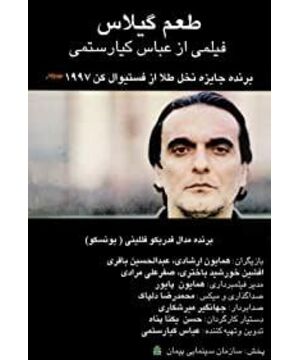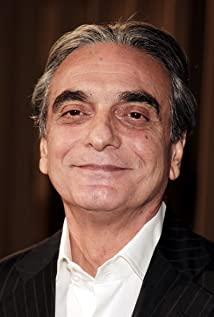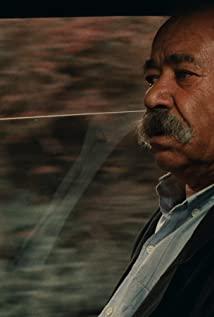Only providing a possibility of interpretation does not mean that the interpretation is reasonable.
When watching this movie, I had doubts for the first time about the subjective and objective shots that I have always taken for granted: whether the subjectivity of the subjective shots must conform to the real situation in the film, that is, whether the camera must be in line with the human eye. The positions coincide and face the direction the human eye is facing?
With this question in mind, I finished reading "The Taste of Cherry" and came to a conclusion that I thought was reasonable: both subjective and objective shots exist under the same lens system, and most of the objective shots have been given a deceptive subjective perspective. , these shots are actually objective in nature but look like subjective shots. I tend to think this is a deliberate attempt by Abbas to create an illusion for the audience. The perceptual ambiguity of the subjective and objective nature of this shot may be able to further interpret Abbas' position and attitude in the film.
In the film, the camera is placed in the car most of the time, showing several different shots, and the resulting several perceptually different subjectivity and objectivity.
1. When there is no other person in the car or beside the car, the fixed close-up shot of the protagonist is facing the protagonist. At this time, the camera is the eyes of the audience, pure objectivity.
2. A fixed close-up shot taken from the inside of the car to the outside of the car window when there are passengers in the car or the scenery outside the car. At this time, the lens maintains its objectivity, but because the position of the camera source is very close to the protagonist, the lens looks like the protagonist's. Subjective lens. For example, at the beginning, passers-by thought that the protagonist needed to hire a worker and came forward to ask, or the dialogue between two people in the car. At this time, because of the direction the camera is facing and the special position of the camera, this objective shot has an illusion of a subjective nature. , the lens looks like the character's field of vision, resulting in a subjective and objective ambiguity.
The reason why these shots (mostly) are objective shots rather than subjective shots is that the existence of subjective shots is premised on the occurrence of the character's "seeing" action. Take these two screenshots of "No Country for Old Men" as an example , the first picture is the character's field of view, after the camera is switched, it returns to the character's "seeing" state.
In "The Taste of Cherries", the fixed shots often stay for a certain period of time, and the characters have to keep "watching" during this period of time. Even if the movie aside, how does a person drive on the road alone? It is also impossible to stare at the other person in the passenger seat for more than ten seconds. In the movie, the continuous "looking" state of the characters does not actually exist, such as the following set of shots: after the protagonist finishes talking to the little brother, his field of vision always faces forward, and then the camera immediately switches to the little brother Here; similarly, when the little brother is in the camera and switches to the protagonist in the next second, the protagonist's field of vision is still facing forward. According to the time and action continuity of the movie, if the second and third shots are the subjective shots of the protagonist, then in the first and fourth shots, the protagonist needs to have the action of "turning his head" to represent the "after and before". "Look" state, otherwise it is a jump cut. And this movie couldn't have used jump cuts, and Abbas couldn't have made that mistake either.
3. The same external shots are shot from inside the car to the outside. These shots are brought out by the protagonist's "look" without exception. They are subjective in nature, but they are different from each other.
The first shot is produced by the protagonist's "look" towards the co-pilot side. Obviously, this shot does not conform to the normal field of view of the human eye. It can be found by comparing the shot of the first picture in point 2.
The second shot is produced by the protagonist "looking" out to the left (that is, the driver's seat side). At this time, the protagonist does indeed have the action of "looking", and the view beyond the window frame is also reasonable (at this time, the window is half concealed).
The third shot is produced by the protagonist's "looking" forward, but the windshield of the car is not in the field of view. This is not the subjective shot of the protagonist in the strict sense (compare the subjective shots in the same direction that appear later).
In addition, the subjective and objective ambiguity of the lens often appears in the scenes outside the car. For example, in the following dialogue scene, the camera is always indoors, the lens always moves back and forth with the protagonist outside, and the voice of the protagonist is also between strong and weak. The change, coupled with the position of the camera close to the other character, makes the shot look like a subjective shot of that character, but then the character that appears to be the camera's point of view appears in the shot, and the shot immediately returns to a simple objective perspective. In fact, in fact, this long shot has always been an objective shot, because it is impossible for the viewpoint characters to keep "seeing" all the time.
Most of the shots in the movie can be analogized with the above examples. Sometimes the shots are indeed subjective perspectives, which conform to the continuity of time and action, and also conform to the normal vision of people. Sometimes the shots are objective perspectives, but in Perceptually deceptive subjective nature. It can be said that Abbas did not carefully construct the subjective lens. The camera source can be regarded as being located in the position of a "middleman" to shoot and record objectively. Due to the special position of the camera and the situation in which the camera is located. relationship, so that the objective lens often has an ambiguous subjective nature.
The subjective and objective nature of the lens represents the subjective and objective nature of the viewpoint, and the subjective and objective ambiguity of the lens is the ambiguity of the viewpoint. The viewpoint of the subjective lens is the characters in the film, and the viewpoint of the objective lens is the director and the audience. The ambiguity of the subjective and objective is reflected in the point of view wandering between the characters in the mirror and the director/audience. The subjective point of view serves the audience, brings the audience into the role, and realizes the communication between the audience and the role. The situation is reproduced as objectively as possible, and the point of view of the camera does not have obvious director's subjective color.
In The Taste of Cherry, the meaning brought by the subjective and objective ambiguity of viewpoint is extraordinary.
First of all, the ubiquitous subjective point of view is undoubtedly an excellent means to connect the audience with the characters. Large sections of in-car dialogue scenes are shown with subjective shots, so the audience becomes the characters themselves to participate in the dialogue, and we become The protagonist who wanted to commit suicide. — which undoubtedly perfectly answers the unavoidable question: is the film preaching?
The answer is obviously no. When the man in the picture above babbles about his experience of giving up suicide because he tasted a cherry, and the big truths of life, who is he talking to? If there is no other person in front of the man, who is the protagonist of the movie, then his act of speaking to the camera has completed the so-called "breaking the fourth wall", then his "preaching" is indeed speaking to the viewer. The reader listens, but in fact, he speaks with an on-screen object. The so-called "speaking" we feel is a perceptual illusion, stemming from the deceptive subjective viewpoint of the camera that hides the "object", or places it outside the painting. If the camera is positioned in the center of the front of the car and is facing the two of them, we can clearly see that this "preaching" takes place between the characters in the two films, rather than facing the audience. The preaching of the characters here does not represent the preaching of the film/director. The subjective nature of the lens has a dual role here. It connects the viewer and the character, and realizes the psychological and emotional empathy between the audience and the protagonist, so that we and the protagonist listen to the sermons of others at the same time. The open ending given by Bass before the end of the film also reflects a certain degree of confirmation: if the protagonist (that is, us as the audience) is moved by the preaching, then he (we) will not choose to take sleeping pills; If the protagonist (we) is not moved by the preaching, then he (we) will still choose to sleep forever. At the same time, this can also be seen as a joke (or even a tease) between Abbas and the audience, making us mistakenly think that he is lecturing, just like the scene when Abbas is filming at the end of the movie - this is just a Just a movie~
Second, the objectivity of the camera’s point of view reflects the film, and Abbas’s position as the film’s creator—objective, neutral, and bystander, which is especially important in the context of this film. "The Taste of Cherry" is a film about life and death, and it is directly related to a problem we often talk about - suicide. Every character in the movie has his own understanding of life and death, and also has his own attitude towards suicide. That is to say, this is a movie about "position". After an issue is thrown, different The characters appear one after another, each "showing" his "stance" on this issue, and directly affecting the protagonist's "stance" on this issue. In such films, the creators often inevitably bring their own positions into the film in some way or form. In "The Taste of Cherry", a film about a sensitive topic such as life and death/suicide, Abbas's position is highly objective. He did not integrate his subjective position into the film at all. The objective point of view is The best proof: the deceptive subjective point of view serves the viewer, but the real objective point of view maintains Abbas' neutrality, even if the characters in the film repeatedly "tell" this behavior, but the narrative And the image is still constructed in the way of "show", just like we don't know what the protagonist is going to do at the beginning of the movie, and we don't know how the protagonist will choose at the end of the movie. The movie never wants to deliberately "tell" the audience what , Abbas maintained the highest respect for the individual's attitude towards life and death, life, death, everyone has their own attitude, there is no right or wrong, no right or wrong.
Of course, Abbas's position is also close under the premise of "objectivity" and "neutrality", which is also brought about by the subjective and objective ambiguity of the camera. its greatest condolences.
2020.12.31
View more about Taste of Cherry reviews











